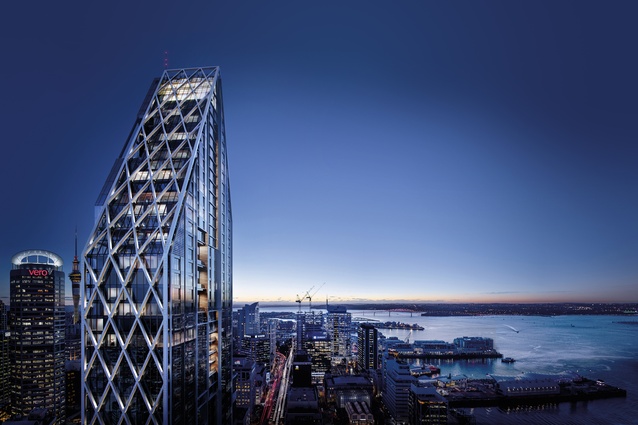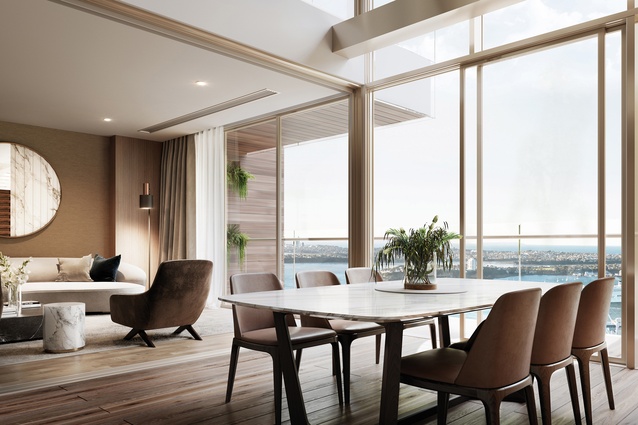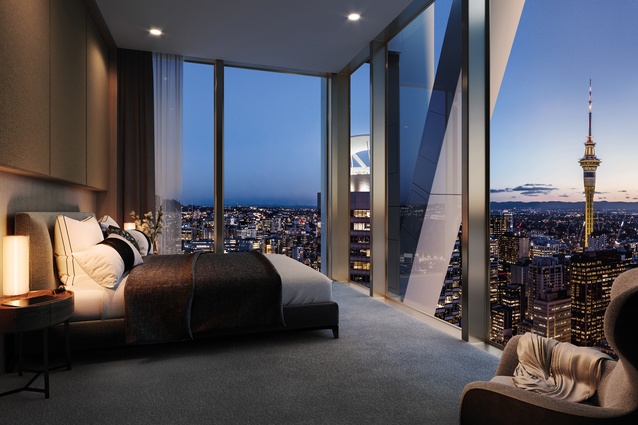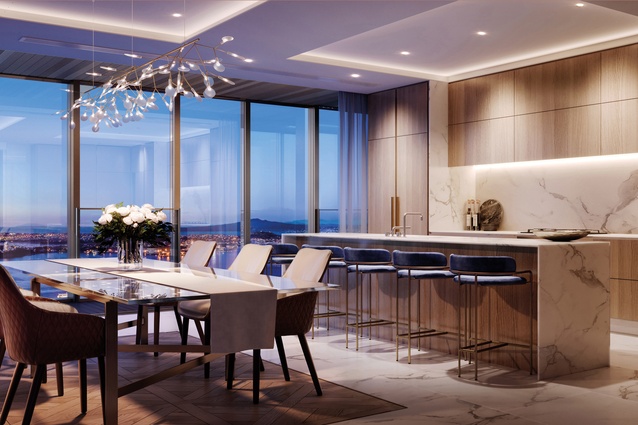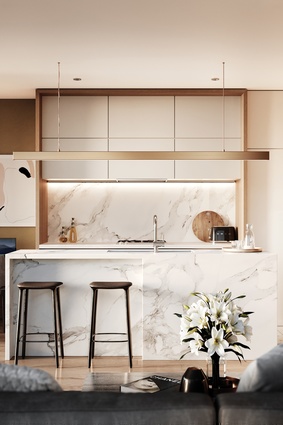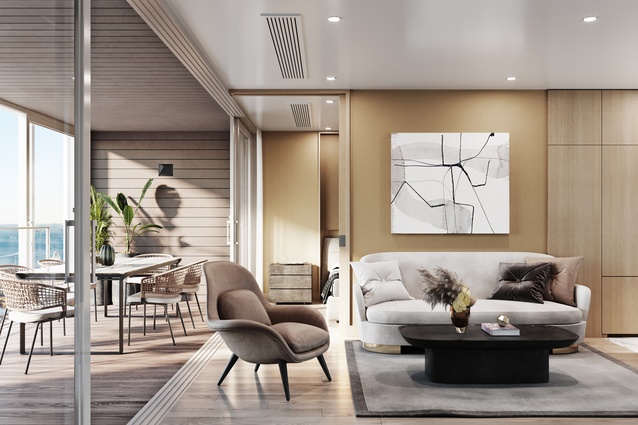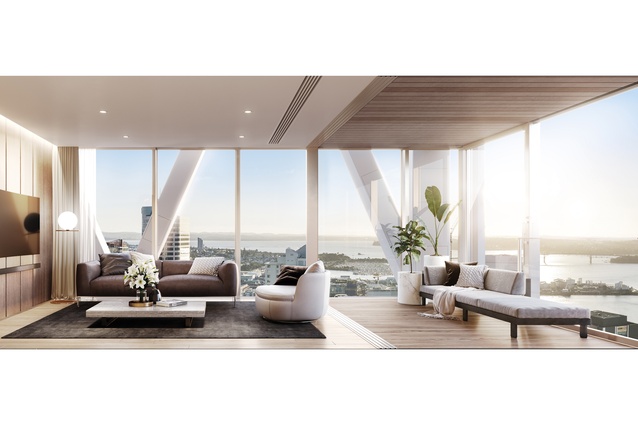City Shapers: Seascape
Partner content: In the first of this series, supported by Fisher & Paykel, we speak to Frank Xu and Steven Shao from Shundi Customs, the development firm responsible for the upcoming Seascape, a mixed-use high-rise expected to be the tallest building of its type in New Zealand.
How did you become interested in Auckland and in this particular site?
Frank Xu (FX): Our director is a long-term developer in Shanghai but his family has been in Auckland for nearly 20 years so he knows the city very well. So, once the company decided to focus its business here, in Auckland and in New Zealand, the strategy was on premiere locations.
Is your business model one of ‘build and sell’ or ‘build and hold’?
FX: It is a combination. We don’t want just to flip land. We want to be a long-term and high-end developer. We normally buy the land, then we engage the best consultants available and then we design it and build it. We have the brand San He Yuan Hotels in Shanghai – that’s our brand in China – and we will introduce it to New Zealand. We’re going to turn the building right next to Seascape – 101 Customs Street East – into a luxury hotel.
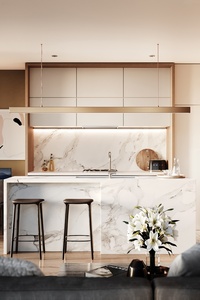
There are a lot of new or upcoming projects near each other. The Pacifica, SO/, now Seascape and your hotel. Is it risky to have so much change in one city stretch at the same time?
FX: We’re quite optimistic because Seascape has been positioned at a much higher end than was The Pacifica. Design-wise, for example, in The Pacifica, you have rooms facing all different directions as the building is square in shape. You have a lot of rooms without sea views and, instead, with views of the city or Sky Tower, but we purposefully designed Seascape so that every room has a view of the sea. We are comparing our product with that of the best around the world. In Sydney, for example, we are on par with buildings in Circular Quay and Darling Harbour, and, in Shanghai, Singapore and Hong Kong, we try to compare what we are doing with the top-end apartments there. Also, we think there is a big opportunity in Auckland. Traditionally, you had apartment complexes like Metropolis or Quay West… and now the International and some in Herne Bay are targeting that same market… but on a small scale.
Do you think there is the demand for this many high-end apartments suddenly arriving in Auckland?
FX: I’ve been here for 22 years so I probably think more like a Kiwi. Steven has been here for only two years and our director comes and goes but mainly lives in Shanghai. From that outsider’s perspective, Auckland currently lacks these kinds of international facilities, including apartments. [Increasing the stock of high-end properties] is what is happening in Wynyard Quarter with the Park Hyatt, or with David Jones in Newmarket, etc. So, it is happening and something that helps is that Auckland City Council is upgrading the city centre. It used to be just a place for people to work and nothing else but, now, there is top shopping, top waterfront facilities, a stadium… so we are quite optimistic about the future.
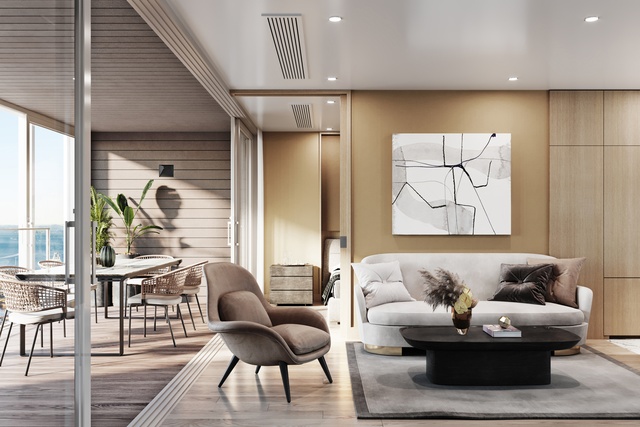
What was your brief for the architects or designers in terms of interior?
Steven Shao (SS): Underfloor heating in bathrooms and timber throughout plus not a single white wall in sight. Also, our facilities [were important to us]; we have a total of nine lifts. Four of those are for our residents, two from the VIP car parks to penthouses and two lifts for the podium… this is for privacy and security. We also wanted high ceilings; the standard ceiling height for apartments is 2.7 metres and, for the penthouses and sub-penthouses, it is 2.9.
FX: That’s why we have only 52 storeys and The Pacifica has 57 – but we are nine metres higher than its total height.
SS: Seascape was defined by floor-to-ceiling, full-height glass panels; it ensures plenty of sunlight.
FX: It is a special structure. It is lighter and also more open plan.
SS: Each apartment has a winter garden so the balconies can be closed or open… And, as mentioned, all the apartments have sea views because all the facilities and the lifts are on the south side. Level 46 is a sub-penthouse floor which means two units per floor. And, from level 47 are the penthouse levels, which means one unit per floor. So, you have 360-degree views of the whole city. The top penthouses span two storeys.
FX: We combined two units, which are called master penthouses, and levels three and four are car parks for these penthouses so people have the exclusive right of using these lifts to take them directly to their apartments. It is very good for celebrities so that no one is going to try to grab them for a photograph!
Are you offering any level of interior customisation for individual apartments?
FX: We have very much standardised this for the standard apartments but the sub and the penthouses will be customised.
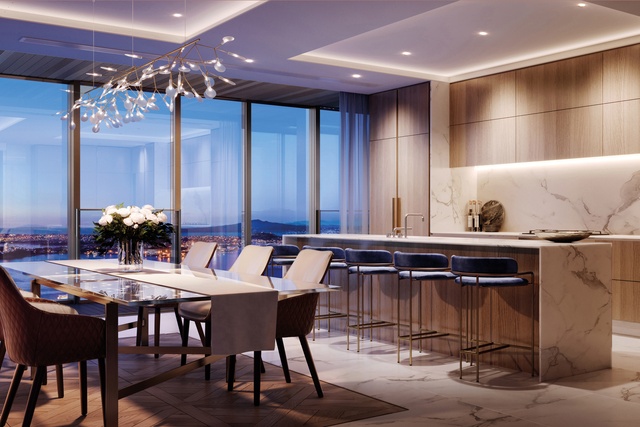
Have you already decided on the design of the kitchens?
SS: Yes. Each apartment, even the smallest studio, has a free-standing island, integrated appliances and a gas cooktop.
FX: They have all been very well designed and very carefully integrated for such a tight space. Even the hot-water cylinder and washing machine and dryer combos for studios are all integrated into the joinery.
Can you describe some of the public spaces?
SS: We have seven levels for the podium. The ground and first floors will be retail and restaurants levels. Levels five to six are offices. On level five, we also have a big deck – like a roof garden – [which was made to encourage residents] to meet their friends here as it is accessible to everybody. And level seven is a split between the podium and residences, because, on level seven, we have a half-Olympic pool, a gym and a bar.
FX: There’s a restaurant in the hotel which also has steps linking it to Seascape so that the residents can use that restaurant and, also, between the hotel and Seascape, there is going to be a laneway. We are planning quite a few cafés and other shared spaces. [Our targeted demographic] for the restaurant and retail is [similar to that of] Britomart. There will be the best of restaurants and the best of retail brands, be they Kiwi or international brands.
Are there tenants for this already?
FX: No. We haven’t started marketing this yet. We are targeting [a] completion date of 2022. And we’ve been told that two years before completion date is the earliest at which you can start marketing.
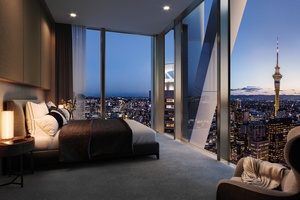
Have there been any challenges?
FX: I always believe that if you can build it on paper or on plan, then you can build it on site. My job is to try, in the design phase, to make things easier for people when they build it
in a real construction site. I have to go through all the details and drawings, and make sure
they can be built without any major issues on site, such as conflicts between different trades. Most of the joinery will be prefab in a factory and assembled on site. It’s quite challenging because, as you know, there’s a resources and skills shortage within the industry.
How are you dealing with that skills shortage?
FX: A few months ago, I attended Beca’s function and I heard something we had been doing, but we didn’t summarise it that way. They identified that the way to deal with the skills shortage is through leadership. And at first I thought “how can you deal with shortage through leadership?” It is more than just a commercial relationship; you have to have some leadership there for engagement and commitment so that they are happy to work with you.
This interview has been edited for brevity and clarity.
Suggested developer package: Apartment
This appliance selection of fully integrated and black appliances is perfect for a clean, minimal aesthetic – ideal for both compact spaces and larger, open-plan living areas. The selection of Fisher & Paykel’s integrated appliances offers true design freedom, backed up by high performance and functionality. Fitting flush with your cabinetry to create consistent break lines and a seamless finish, the appliances can be customised to suit any kitchen design
or cabinetry style.
In response to demand from the design community, Fisher & Paykel created the Minimal Style to be as discreet as possible, removing accents and trim. This almost allows the appliances to disappear into a kitchen, if required, or to coordinate perfectly with other materials, accents and colours used in the overall design.
Complemented by a range of integrated appliances, which allow the specifier unparalleled design freedom, for a clean and cohesive kitchen aesthetic.

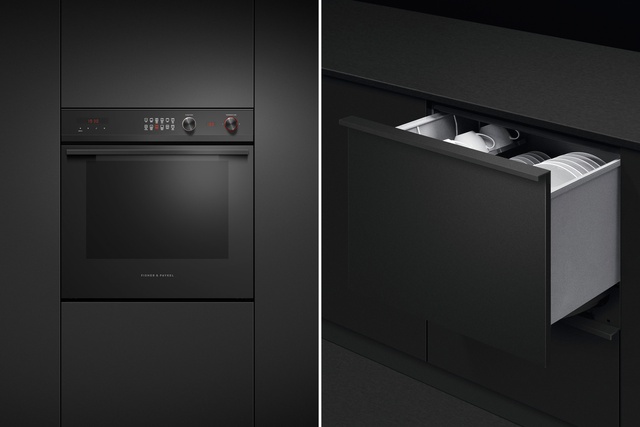
ArchitectureNow works with a range of partners in the A&D supply sector to source appropriate content for the site. This article has been supported by Fisher & Paykel. See more at thekitchentools.fisherpaykel.com.

